Purchase Order
Next, let's now walk-through the transfer of data from Agiliron to QuickBooks for Purchase Orders.
Purchase Orders can be found under the "Orders > Purchase Orders" tab on the left menu panel.
In the example shown below, we have one Purchase Order which has NOT been marked as "Paid" and it has also been "Received".
Note: In general, most people manage their payables in QuickBooks and will want to sync PO's after they are marked "Received". The PO is sent to QuickBooks as a "Bill" that the user can match to the Vendor Invoice when received and pay through QuickBooks.
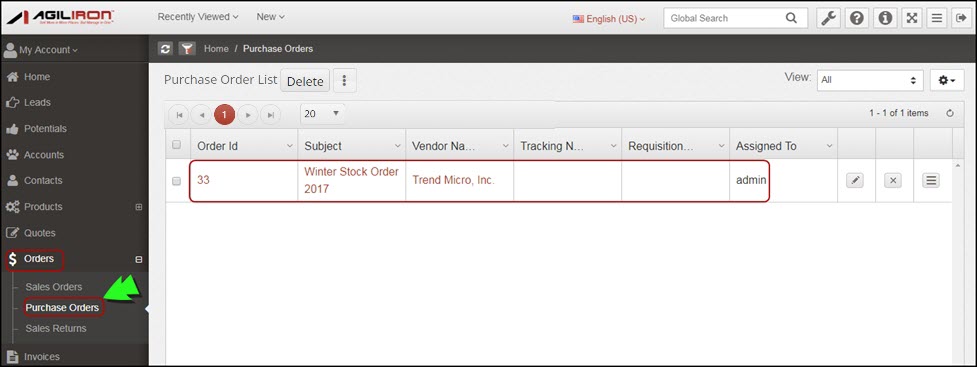
Details for Order 33 are shown below.
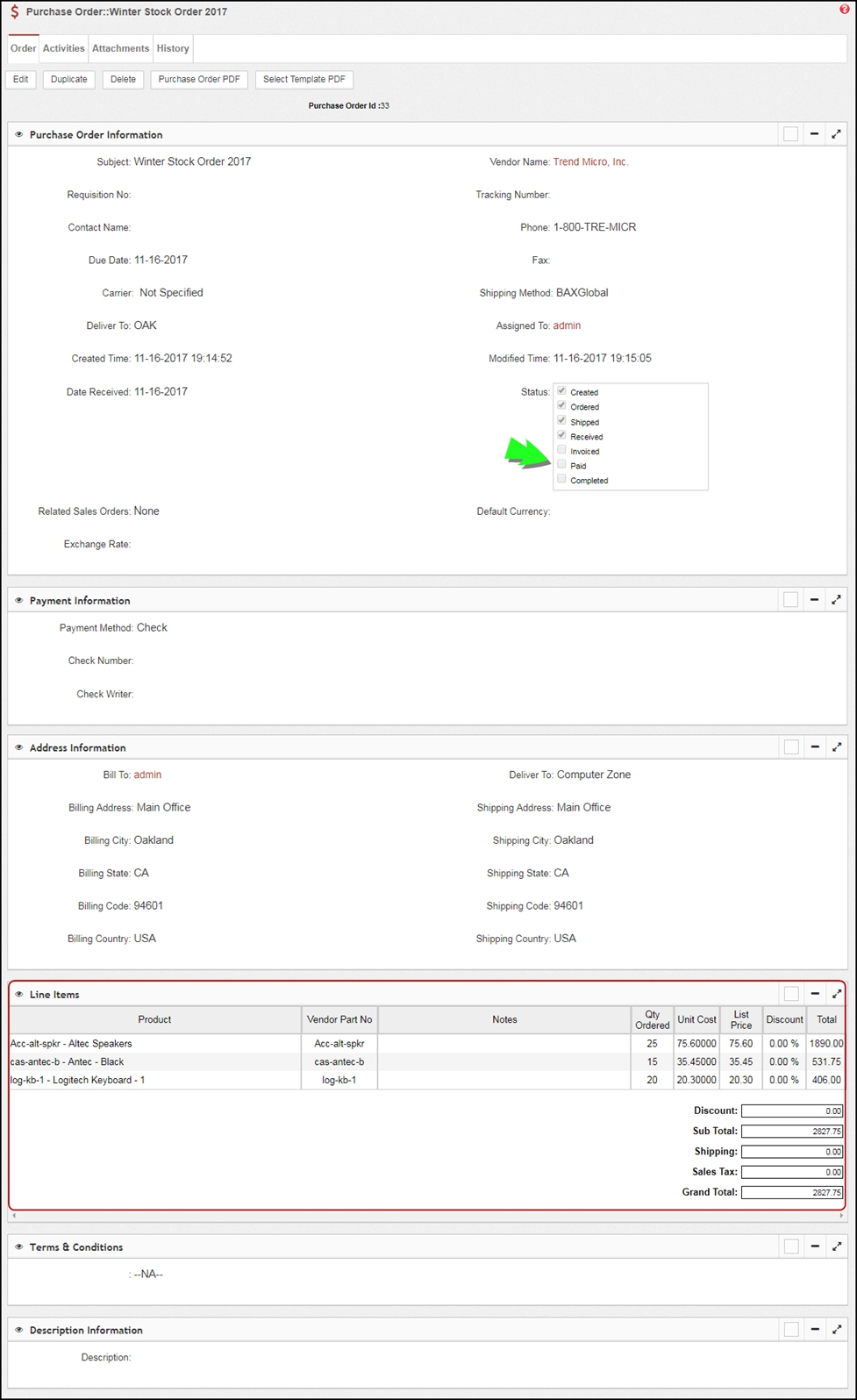
Now let's launch
- "QuickBooks" (be sure to open the right company file) and;
- the "Agiliron Sync Application" on your Windows computer.
- In the Agiliron Sync Application, click the "Sync Purchase Orders from Agiliron" tab as shown below.
- Here you will see that the system recognizes that there are Purchase Orders that are waiting to be synchronized with QuickBooks.
Let's go ahead and click on the "Sync to QuickBooks" button. This now transfers this order information to your QuickBooks Company file.
Note: It is important to note here that you do not need to do this for every order. As the orders come in, the system will recognize and keep accumulating them till you initiate the sync.
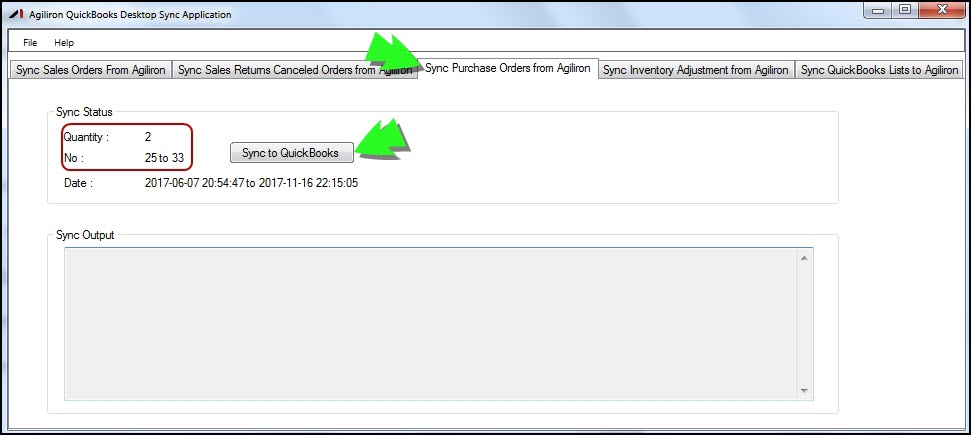
Let's take a look at the Bill that has now been created for the associated Vendor.
- You can see that all the details have come in correctly -including the Vendor information (vendor name character limit = 100), the Product Line items (product code now included in the line item description), Taxes (if applicable), Shipping and other elements of the order.
- In our Agiliron instance under Settings > QuickBooks, we have set the "Use as Transaction Date" to "Created Date". For this purchase order, the date that displays in QuickBooks (ie: the Bill Date for Order 33) reflects the dates the orders were created in Agiliron.
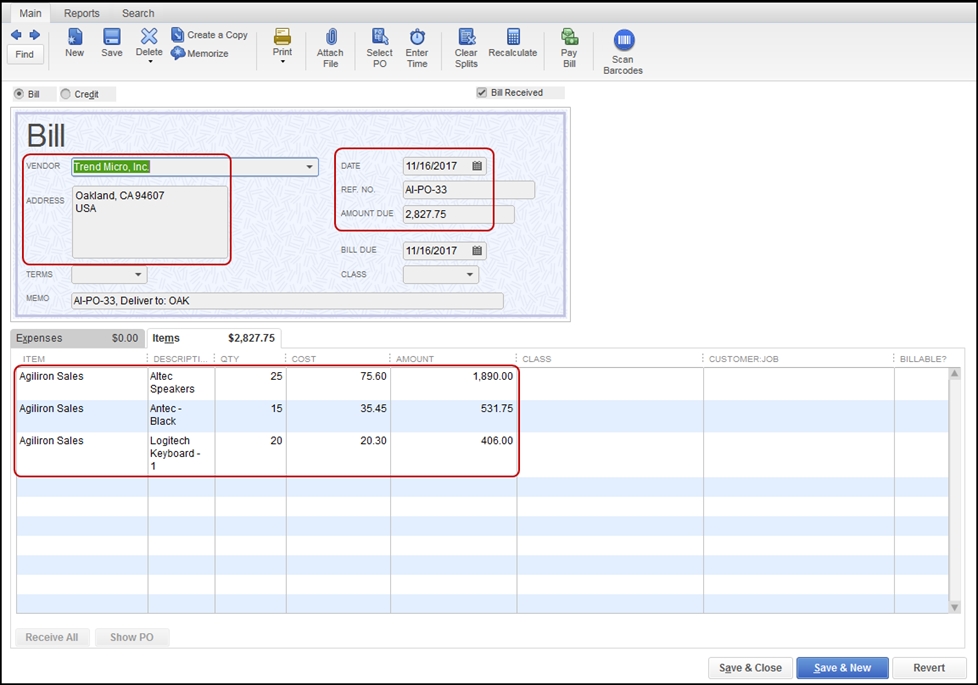
One final thing we will want to look at here is the adjustments made to Inventory Asset account for the purchase order that just came in.
Let's go to the Chart of Accounts and bring up the Inventory Asset account - here you can see entries that increase the Inventory Asset for the purchases that have been made against the Accounts Payable to the vendor.
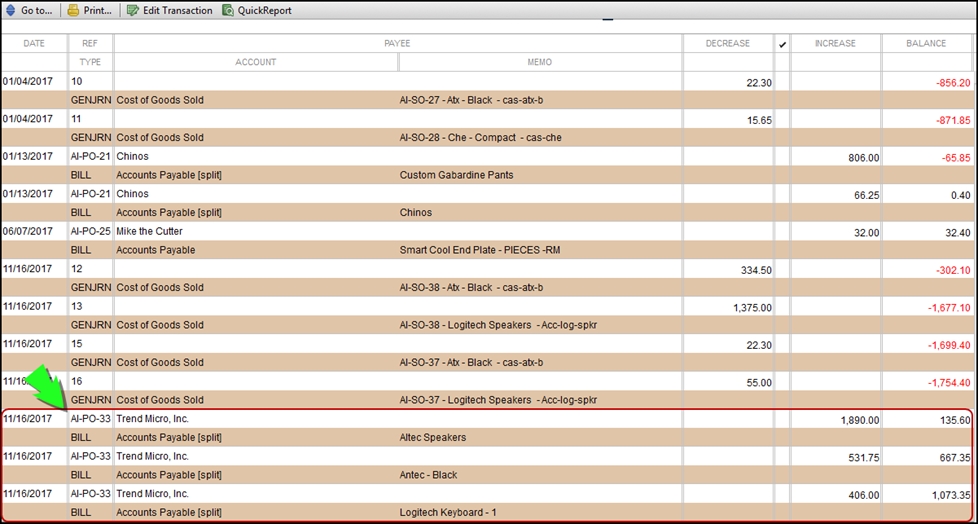
Updated 11 months ago
